Abstract
Background: Urban vegetation studies have, until recently, been relatively uncommon in South Africa. Yet, natural urban vegetation is constantly competing with and greatly impacted by urbanisation. This vegetation requires proper management and needs to be conserved because it is an important ecological infrastructure.
Objectives: The objectives of the study were to identify the main vegetation types within the urban open spaces in the Bloemfontein metropolitan area, and to determine the floristic composition and species diversity of the area.
Methods: A total of 248 relevés were classified using the TWINSPAN classification algorithm, and relationships between the communities and the environment were determined with the Detrended Correspondence Analysis and Canonical Correspondence Analysis computer programs. Species diversity was partitioned into α-, β- and γ-diversities.
Results: Within the study area, 77 plant families and 248 genera, with a total of 376 plant species, were identified. The largest families are Poaceae, Asteraceae and Fabaceae, whereas the largest genera are Eragrostis, Aristida, Cyperus, Asparagus and Senecio. The study area has high species richness and the most species-rich sites are found adjacent to rivers and streams, and also on the slopes of hills and ridges. The vegetation is classified under five major vegetation types and four sub-units, which show a distinct association with topography and soil texture.
Conclusion: The urban vegetation of Bloemfontein is species-rich and should be properly managed and conserved. In particular, the wetlands and rocky outcrops on hills and ridges, which are the most threatened habitats in the study area, need special management.
Introduction
Bloemfontein is a medium-sized city in the Free State province, and is situated in a region characterised by intensive commercial farming. The farming, coupled with increased urbanisation, resulted in degradation and fragmentation of the natural vegetation. An ecological approach to urban open space planning has been suggested (Florgård 2000; Poynton & Roberts 1985; Thompson 2002), which would ensure that open space areas centrally placed in cities are linked with open spaces towards the periphery of cities by dispersal corridors such as rail and roadside vegetation, including ruderal and disturbed vegetation (Poynton & Roberts 1985). Roadsides and railway tracks can have high species richness, especially in terms of rare and endangered plant species that can be harboured in such habitats (Forman & Alexander 1998; Galera et al. 2014).
The ecological approach to urban open space planning and management is a sensible and achievable objective, but it is constrained in part by lack of ecological expertise from the relevant government authorities, lack of infrastructure and financial support and also by public opinion (Cilliers, Müller & Drewes 2004). Public opinion is especially important because, for example, even though urban dwellers show a general desire for contact with nature, there is a consistently negative public perception when it comes to ruderal and spontaneous vegetation on derelict sites (Millard 2004).
There are immense benefits of conserving urban vegetation, which can be scientific, social and economic (Barbosa et al. 2007; Hunter 2007). Urban green space is also important for the overall well-being of the urban dwellers (Dearborn & Kark 2010; Fuller et al. 2007; Tzoulas et al. 2007). Open space within urban areas has beneficial effects on microclimate, hydrology, biodiversity and ecological processes (Bolund & Hunhammar 1999; Federer 1976; Goddard, Dougill & Benton 2009; Godefroid & Koedam 2007). Therefore, cities with relatively large or many conserved open spaces may, for example, have higher species diversity, less water run-off, reduced noise and air pollution (Bolund & Hunhammar 1999; Litschke & Kuttler 2008; Tratalos et al. 2007; Whitford, Ennos & Handley 2001).
The proper management and conservation of urban open spaces requires in-depth knowledge of the spatial distribution, floristic, structural and functional compositions of the major vegetation types (VTs) within the urban environment. The present vegetation study was initiated to identify the main VTs of the open spaces within the Bloemfontein metropolitan area, and to determine the composition and diversity of plant species found in the area. Such urban vegetation studies are relatively few in South Africa, limited to those conducted by among others Roberts (1993), Cilliers, Van Wyk and Bredenkamp (1999) and Grobler, Bredenkamp and Brown (2006).
Research method and design
Study area
Bloemfontein extends from approximately 29°00’ to 29°15’ south and 26°07’ to 26°21’ east, with altitude ranging from 1350 m to 1450 m above sea level. According to the climate statistics from the South African Weather Service, the annual mean maximum and minimum temperatures are 24.6 °C and 7.6 °C, respectively. Rainfall mainly occurs in summer in the form of thunderstorms, and it averages 550 mm annually. The main geologic feature of the study area is the Karoo Supergroup, represented by the Tierberg Formation of the Ecca Group and the Adelaide Sub-Group of the Beaufort Group; there are also dolerite intrusions of the post-Karoo age (Johnson et al. 2006). Prominent soil groups are oxidic (Hutton form), plinthic (Bainsvlei form), duplex (Valsrivier, Swartland and Sterkspruit forms), cumulic (Oakleaf form), vertic (Arcadia form) and melanic (Milkwood form) (Fey 2010; Soil Classification Working Group 1991). Bloemfontein is situated in the Grassland Biome (Rutherford & Westfall 1994), and is part of the Central Variation of the Dry Cymbopogon-Themeda Veld (Acocks 1988). Other classifications describe Bloemfontein’s vegetation as Dry Sandy Highveld Grassland (Bredenkamp & Van Rooyen 1996) and Dry Highveld Grassland (Mucina et al. 2006).
Vegetation survey
The first step of the survey entailed the stratification of vegetation prior to sampling. Stratification of the area was done on 1:50 000 scale maps and 1:30 000 aerial photographs, based on the topography and relative homogeneity of physiognomic units. The topographic units recognised were the watercourses, flat plains as well as the hills and ridges. A total of 248 relevés were compiled; 160 were compiled for the first time, while 88 were from existing data (Muller 1970; Rossouw 1983). Sample plots ranging in size between 16 m2 for the grassland vegetation and 100 m2 for the woody vegetation were surveyed across the study area. All plant species present in each sample plot were recorded and each was given a cover-abundance value according to the Braun–Blanquet scale (Kent & Coker 1996; Mueller-Dombois & Ellenberg 1974). Plant taxonomy generally follows Germishuizen and Meyer (2003). For each relevé, habitat attributes were also noted, including rock type (geology), terrain type (topographical position) and an estimation of the percentage of rockiness of the soil surface. Soil characteristics such as soil depth, pH, organic matter and texture were used for the study. Other noted observations included the extent of soil erosion and forms of biotic influence such as utilisation by herbivores and management practices.
Data analysis
Phytosociological data were first captured and processed in the TURBOVEG database (Hennekens 1996a), and then exported to the MEGATAB computer program (Hennekens 1996b) for classification using TWINSPAN (Hill 1979a). The result was a synoptic table that shows a hierarchical classification of the syntaxa, with each synrelevé representing a plant community. The principle of synoptic tables is based on rating the presence of each species within a community on a constancy scale (Kent & Coker 1996; Mueller-Dombois & Ellenberg 1974). An ordination technique, Detrended Correspondence Analysis (DECORANA) (Hill 1979b), was applied to the data set to illustrate floristic relationships between the plant communities and to detect possible relationships between the communities and the environment. Canonical Correspondence Analysis (CANOCO) (Ter Braak & Šmilauer 2009), an extension of DECORANA, was also carried out to further illustrate the correlations between the vegetation data and the environmental variables.
Patterns of species diversity were analysed using two types of diversity, that is, α-diversity and β-diversity, and also evenness. Two aspects of α-diversity were analysed, the first being species richness (S) that is defined as the number of species per sample plot. Because S can be exaggerated by the presence of rare species, α-diversity was also measured with the Shannon–Wiener diversity index (H′). It is a weighted expression of species richness and the proportion in which each species is represented in a sample plot, which is calculated as:

where pi is the proportion of cover in the ith species. The cover values used were based on median values (except Category r & +) of the cover categories derived from the Braun–Blanquet cover-abundance scale: 1% for Category r & + (cf. Ma 2005), 3% for Category 1 (1%–5%), 9% for Category 2a (6%–12%), 19% for Category 2b (13%–25%), 38% for Category 3 (26%–50%), 63% for Category 4 (51%–75%) and 88% for Category 5 (76%–100%). Evenness, defined as the relative abundance of species in a unit area (Stirling & Wilsey 2001; Wilsey & Stirling 2007), was used to measure the similarity of relative abundances of species within sample plots (Sankaran 2009). It was calculated with the Pielou’s evenness index (J′) as
A one-way analysis of variance (ANOVA) with Tukey’s honestly significant difference (HSD) test (using SPSS® software version 19) was then conducted to compare S, H′ and J′ between the different VTs.
Beta (β) diversity was calculated to determine species turnover or the extent to which species diversity differs within the VTs. Various measures of β-diversity have been proposed over the years, but in the present study, the Whittaker’s diversity index (βw) was used because it is widely regarded as a simple but highly effective measure of β-diversity (Magurran 2004; Van der Maarel 2005). It was calculated as:
where Stotal is the total number of species present in each VT (γ-diversity) and Save is the average species richness (α-diversity) for each sample plot in a community.
Results
Floristic composition
The vegetation of Bloemfontein is dominated by the red grass Themeda triandra with Eragrostis lehmanniana as a constant companion. Other prominent grasses are Aristida congesta, Digitaria eriantha, Sporobolus fimbriatus and Eragrostis curvula. Forbs such as Oxalis depressa, Hibiscus pusillus and Felicia muricata are widespread, but they never attain dominance within the communities. It is only in localised wetland habitats where hydrophytic sedges and other forbs dominate. The vegetation is represented by 77 families and 248 genera (Table 1). The families with the highest number of genera are Poaceae, Asteraceae and Fabaceae (Table 2), while the most diverse genera are Eragrostis, Cyperus, Aristida and Asparagus (Figure 1). A total of 376 plant species were identified for the study area: 82 play a diagnostic role, 66 are companion species and a further 228 are either localised or of very rare occurrence. Of these rare species, only 175 are presented in the synoptic table (see Appendix 1); the other 53 are excluded because of their extremely rare occurrence. Eight species are declared invasives (Department of Environmental Affairs 2016), namely Argemone ochroleuca subsp. ochroleuca, Verbena bonariensis, Gleditsia triacanthos, Cestrum laevigatum, Cuscuta campestris, Pennisetum villosum, Salsola kali and Convolvulus arvensis. None of the species recorded is threatened (http://redlist.sanbi.org/).
 |
FIGURE 1: The most diverse genera in Bloemfontein, with four or more species. The black and grey bars indicate Dicotyledoneae and Monocotyledoneae, respectively. |
|
| TABLE 1: Composition of the vascular flora of the Bloemfontein urban areas. |
| TABLE 2: A list of plant families of Bloemfontein urban areas (listed alphabetically within subdivisions) with the number of genera and species represented. |
Vegetation classification and ordination
A synoptic classification of the vegetation is presented, showing only the major VTs and not the lower ranked syntaxa constituting each VT. The following five major vegetation units and four subdivisions were recognised from the study area, as summarised in Table 3:
VT 1: Oenothera rosea–Bromus catharticus Wetland vegetation
VT 1.1: Rumex lanceolatus–Cyperus longus Streambed vegetation
VT 1.2: Vachellia karroo– Asparagus laricinus Streambank vegetation
VT 2: Olea europaea–Buddleja saligna Shrubland
VT 3: Aristida diffusa subsp. burkei–Crassula nudicaulis Succulent grassland
VT 3.1 Delosperma pottsii–Cotyledon orbiculata Grassland
VT 3.2 Oropetium capense–Eragrostis nindensis Grassland
VT 4: Aristida congesta–Themeda triandra Grassland
VT 5: Felicia muricata–Themeda triandra Grassland
| TABLE 3: Habitat characteristics of the Bloemfontein vegetation types. |
The DECORANA ordination plot (Figure 2) shows a clear grouping of the relevés into the VTs as classified in the synoptic table (Appendix 1). Axis 1 and Axis 2 have eigenvalues of 0.863 and 0.664, respectively. Axis 1 is positively associated with the soil moisture gradient, beginning with the D. pottsii–C. orbiculata Grassland and the O. capense–E. nindensis Grassland on the left portion of the ordination plot, which are characteristics of relatively dry habitats. The R. lanceolatus–C. longus Streambed vegetation and V. karroo–A. laricinus Streambank vegetation are found towards the right end of the ordination plot because of their occurrence in wetter habitats. Axis 2 does not show any clear environmental trends.
 |
FIGURE 2: A Detrended Correspondence Analysis ordination of the vegetation of Bloemfontein showing the relative positions of the relevés along the first two axes (Axis 1 and Axis 2). |
|
Soil characteristics of vegetation types
The deepest soils were recorded in the R. lanceolatus–C. longus Streambed vegetation (433 mm ± 78 mm) and V. karroo–A. laricinus Streambank vegetation (475 mm ± 62 mm); these soils also have the highest pH of 7.2 ± 1.1 and 7.4 ± 0.9, respectively (Table 4). The O. europaea–B. saligna Shrubland has the highest clay content (30% ± 5%) and organic matter content (4.65% ± 2.02%). The soils of the A. congesta–T. triandra Grassland and the F. muricata–T. triandra Grassland have the highest sand content at 76% ± 12% and 66% ± 8%, respectively. These communities also occur on relatively shallower soils with the average depth of 285 mm ± 105 mm and 205 mm ± 68 mm, respectively. No soil samples were collected for the D. pottsii–C. orbiculata Grassland and the O. capense–E. nindensis Grassland. The collecting of samples was mainly restricted by the shallow nature of the soil, compounded by the extensive dolerite rocks and boulders in habitats where these communities occur. The CANOCO biplot (Figure 3) reveals community correlations with soil depth, texture (clay, sand and silt contents), pH and organic matter. Axis 1 (eigenvalue 0.618) shows correlations with soil depth and clay content. Axis 2 (eigenvalue 0.553), on the other hand, is correlated with silt, organic matter, pH and sand.
 |
FIGURE 3: A Canonical Correspondence Analysis biplot of sample plots and soil variables (depth [soil depth], clay [clay content], silt [silt content], sand [sand content], OM [organic matter content] and pH). |
|
| TABLE 4: Soil characteristics of the Bloemfontein vegetation types. |
Patterns of species diversity
The D. pottsii–C. orbiculata Grassland, O. capense–E. nindensis Grassland, O. europaea–B. saligna Shrubland and V. karroo–A. laricinus Streambank vegetation have high α-diversity (both S and H′), with S of 20.7 ± 5.7, 21.2 ± 8.6, 23.9 ± 6.7 and 24.4 ± 6.2, respectively, and H′ of 2.51 ± 0.42, 2.44 ± 0.70, 2.17 ± 0.43 and 1.96 ± 0.35, respectively (Table 5). The four VTs also have high J′ (0.84 ± 0.14, 0.83 ± 0.18, 0.69 ± 0.09 and 0.62 ± 0.08, respectively) and γ-diversity (130, 115, 137 and 128, respectively). The R. lanceolatus–C. longus Streambed vegetation has the lowest γ-diversity (75), S (9.6 ± 4.9), H′ (1.14 ± 0.61) and J′ (0.50 ± 0.21). With regard to β-diversity, relatively low βw (5.2–6.3) was measured for the D. pottsii–C. orbiculata Grassland, O. capense–E. nindensis Grassland, O. europaea–B. saligna Shrubland and V. karroo–A. laricinus Streambank vegetation. The highest βw was recorded for F. muricata–T. triandra Grassland (9.3) and R. lanceolatus–C. longus Streambed vegetation (7.8), while the lowest βw (5.1) was recorded for A. congesta–T. triandra Grassland.
| TABLE 5: Species diversity of the vegetation types of the Bloemfontein area. |
Discussion
The R. lanceolatus–C. longus Streambed vegetation shares similarities with the Leersia hexandra–Schoenoplectus paludicola wetland of the slow-draining watercourses in northern Free State (Fuls, Bredenkamp & Van Rooyen 1992a). The other comparable community is the Echinochloa holubii–C. longus wetland of the Kroonstad area, described by Kooij et al. (1991). V. karroo–A. laricinus Streambank vegetation is comparable to the V. karroo–A. laricinus Thornveld of the Kroonstad area (Kooij et al. 1991). This community also belongs to the V. karroo class described by Du Preez and Bredenkamp (1991). With regard to O. europaea–B. saligna Shrubland, Fuls, Bredenkamp and Van Rooyen (1992b) described a related Sporobolus fimbriatus–Tarchonanthus camphoratus community of the dolerite hills of the northern Free State.
The low S measured for the R. lanceolatus–C. longus Streambed vegetation is typical of wetland communities, because only a few species are adapted to survive in habitats where the soil is permanently waterlogged. Other wetlands in the Free State are also characterised by low species richness, for example, wetland communities of the central Free State (Muller 2002), northern Free State (Fuls 1993) and north-western Free State (Kooij 1990). In contrast, riparian zones adjacent to the wetlands are ecologically diverse and harbour different plant species. The V. karroo–A. laricinus Streambank vegetation, in concurrence, has high species richness. Cilliers, Schoeman and Bredenkamp (1998) reported similar species richness patterns, characterised by low species richness in waterlogged soils compared to the drier river banks.
The R. lanceolatus–C. longus Streambed vegetation has high βw, as there are few common species within the vegetation unit. This high species turnover can mainly be ascribed to the habitat-specific nature of hydrophytic species. The F. muricata–T. triandra Grassland also has high βw, and according to Lennon et al. (2001), inflated βw could result from large differences in species richness between sample plots. There is a high variation of S in the F. muricata–T. triandra Grassland, ranging from 1 to 19. This variation is possibly because of the disturbed and unstable nature of some habitats where parts of this vegetation unit are found, such as on roadsides and along railway tracks. For example, situations where only one species was encountered in a sample plot were along roadsides where Enneapogon cenchroides was found dominating.
A high H′ was recorded for the D. pottsii–C. orbiculata Grassland and the O. capense–E. nindensis Grassland because these communities have a fairly proportionate abundance of the key species, and hence their high evenness (J′) values. On the other hand, both the high γ-diversity and S as recorded for the O. europaea–B. saligna Shrubland could possibly be artefacts of sampling size and sample plot size, respectively. H′ for this unit is comparatively lower than for the former two grassland communities because of the overwhelming dominance of O. europaea, B. saligna, Grewia occidentalis and Searsia burchellii, and hence the relatively lower evenness.
The overall species richness of the study area (376 species) is comparable to that of other urban areas in South Africa. For example, it is comparable to the 350 species reported by Van der Walt et al. (2015) for a study of the grassland fragments in the Tlokwe Municipal area in North-West Province. In the Pretoria–Johannesburg metropolitan area in Gauteng Province, Grobler (2000) reported a higher number of species (a total of 600), but this is most likely because of the larger size of the study area. It is, however, important to acknowledge that urban open spaces in South Africa may generally not harbour levels of species richness similar to those in formally designated conservation areas. For example, higher species richness was recorded in relatively much smaller areas of the Kruger National Park: 450 species in a 139-ha area of the Nkuhlu exclosures (Siebert & Eckhardt 2008) and 233 species in a 129-ha area of the Letaba exclosures (Siebert, Eckhardt & Siebert 2010). Nonetheless, Götze et al. (2008) reported species richness lower than in Bloemfontein and the other aforementioned urban areas: 219 species in the Mapungubwe National Park. Our study therefore confirms that urban vegetation in South Africa can also be species rich, and should be properly managed and conserved.
Conclusion
We identified five major VTs and four sub-units in the Bloemfontein area and found the wetlands and rocky outcrops to be most threatened habitats. The O. rosea– B. catharticus wetlands (VT 1) possess a large number of highly palatable species and as a result are subjected to frequent overgrazing and trampling. As a conservation measure, access to these wetland areas could be restricted and this can be achieved by fencing off the most vulnerable areas. The A. diffusa subsp. burkei–C. nudicaulis grassland of the rocky outcrops (VT 3) is threatened by the expansion of Bloemfontein city to the north. This is a botanically diverse VT that occurs exclusively in the Seven Dams Conservancy, and represents an isolated type of vegetation not found in any other parts of Bloemfontein. The area should therefore be regarded as a conservation priority because of its uniqueness and high botanic diversity.
Generally, the urban vegetation of Bloemfontein is species rich and should be properly managed and conserved. There are enormous benefits that can be derived from the conservation of urban vegetation, be they scientific, social or economic. Most importantly, urban vegetation has been linked with overall human health and well-being.
Acknowledgements
Competing interests
The authors declare that they have no financial or personal relationships that may have inappropriately influenced them in writing this article.
Authors’ contributions
M.N.V.D. did the vegetation survey and classification, data analysis and wrote the manuscript. P.J.d.P. conceptualised the project, did part of the vegetation survey and assisted with the vegetation classification.
References
Acocks, J.P.H., 1988, ‘Veld types of South Africa (3rd ed.)’, Memoirs of the Botanical Survey of South Africa 57, 1–146.
Barbosa, O., Tratalos, J.A, Armsworth, P.R., Davies, R.G., Fuller, R.A., Johnson, P. et al., 2007, ‘Who benefits from access to green space? A case study from Sheffield, UK’, Landscape and Urban Planning 83, 187–195. https://doi.org/10.1016/j.landurbplan.2007.04.004
Bolund, P. & Hunhammar, S., 1999, ‘Ecosystem services in urban areas’, Ecological Economics 29, 293–301. https://doi.org/10.1016/S0921-8009(99)00013-0
Bredenkamp, G. & Van Rooyen, N., 1996, ‘Dry sandy Highveld grassland’, in B. Low & A.T. Rebelo (eds.), Vegetation of South Africa, Lesotho and Swaziland, pp. 41–42, Department of Environmental Affairs and Tourism, Pretoria.
Cilliers, S.S., Müller, N. & Drewes, E., 2004, ‘Overview on urban nature conservation: Situation in the western-grassland biome of South Africa’, Urban Forestry & Urban Greening 3, 49–62. https://doi.org/10.1016/j.ufug.2004.04.003
Cilliers, S.S., Schoeman, L.L. & Bredenkamp, G.J., 1998, ‘Wetland plant communities in the Potchefstroom Municipal Area, North-West, South Africa’, Bothalia 28, 213–229. https://doi.org/10.4102/abc.v28i2.642
Cilliers, S.S., Van Wyk, E. & Bredenkamp, G.J., 1999, ‘Urban nature conservation: Vegetation of natural areas in the Potchefstroom municipal area, North West Province, South Africa’, Koedoe 42, 1–30. https://doi.org/10.4102/koedoe.v42i1.218
Dearborn, D.C. & Kark, S., 2010, ‘Motivations for conserving urban biodiversity’, Conservation Biology 24, 432–440. https://doi.org/10.1111/j.1523-1739.2009.01328.x
Department of Environmental Affairs, 2016, National Environmental Management: Biodiversity Act, 2004 (Act no. 10 of 2004), Alien and invasive species lists, 2016, Government Printing Works, Pretoria.
Du Preez, P.J. & Bredenkamp, G.J., 1991, ‘Vegetation classes of the southern and eastern Orange Free State (Republic of South Africa) and the highlands of Lesotho’, Navorsinge van die Nasionale Museum Bloemfontein 7, 477–526.
Federer, C.A., 1976, ‘Trees modify the urban microclimate’, Journal of Arboriculture 2, 121–127.
Fey, M., 2010, Soils of South Africa, Cambridge University Press, Cambridge.
Florgård, C., 2000, ‘Long-term changes in indigenous vegetation preserved in urban areas’, Landscape & Urban Planning 52, 101–116. https://doi.org/10.1016/S0169-2046(00)00126-2
Forman, R.T.T. & Alexander, L.E., 1998, ‘Roads and their major ecological effects’, Annual review of Ecology, Evolution, and Systematics 29, 207–231. https://doi.org/10.1146/annurev.ecolsys.29.1.207
Fuller, R.A., Irvine, K.N., Devine-Wright, P., Warren, P.H. & Gaston, K.J., 2007, ‘Psychological benefits of greenspace increase with biodiversity’, Biology Letters 3, 390–394. https://doi.org/10.1098/rsbl.2007.0149
Fuls, E.R., 1993, ‘Vegetation Ecology of the Northern Orange Free State’, PhD thesis, University of Pretoria.
Fuls, E.R., Bredenkamp, G.J. & Van Rooyen, N., 1992a, ‘The hydrophilic vegetation of the Vredefort–Kroonstad–Lindley–Heilbron area, northern Orange Free State’, South African Journal of Botany 58, 231–235.
Fuls, E.R., Bredenkamp, G.J. & Van Rooyen, N., 1992b, ‘Plant communities of the rocky outcrops of the northern Orange Free State, South Africa’, Vegetatio 103, 79–92.
Galera, H., Sudnik-Wójcikowska, B., Wierzbicka, M., Jarzyna, I. & Wiłkomirski, B., 2014, ‘Structure of the flora of railway areas under various kinds of anthropopression’, Polish Botanical Journal 59, 121–130. https://doi.org/10.2478/pbj-2014-0001
Germishuizen, G. & Meyer, N.L. (eds.), 2003, ‘Plants of southern Africa: An annotated checklist’, Strelitzia 14, 1–1231.
Goddard, M.A., Dougill, A.J. & Benton, T.G., 2009, ‘Scaling up from gardens: Biodiversity conservation in urban environments’, Trends in Ecology and Evolution 25, 90–98. https://doi.org/10.1016/j.tree.2009.07.016
Godefroid, S. & Koedam, N., 2007, ‘Urban plant species patterns are highly driven by density and function of built-up areas’, Landscape Ecology 22, 1227–1239. https://doi.org/10.1007/s10980-007-9102-x
Götze, A.R., Cilliers, S.S., Bezuidenhout, H. & Kellner, K., 2008, ‘Analysis of the vegetation of the sandstone ridges (Ib land type) of the north-eastern parts of the Mapungubwe National Park, Limpopo Province, South Africa’, Koedoe 50, 72–81. https://doi.org/10.4102/koedoe.v50i1.136
Grobler, C.H., 2000, ‘The vegetation ecology of urban open spaces in Gauteng’, MSc thesis, University of Pretoria.
Grobler, C.H., Bredenkamp, G.J. & Brown, L.R., 2006, ‘Primary grassland communities of urban open spaces in Gauteng, South Africa’, South African Journal of Botany 72, 367–377. https://doi.org/10.1016/j.sajb.2005.10.008
Hennekens, S.M., 1996a, TURBOVEG: A software package for input, processing, and presentation of phytosociological data, University of Lancaster, IBN-DLO, Wageningen.
Hennekens, S.M., 1996b, MEGATAB: A visual editor for phytosociological tables, Giesen & Geurts, Ulft.
Hill, M.O., 1979a, TWINSPAN: A Fortran program for arranging multivariate data in an ordered two-way table by classification of individuals and attributes, Cornell University, New York.
Hill, M.O., 1979b, DECORANA: A Fortran program for detrended correspondence analysis and reciprocal averaging, Cornell University, New York.
Hunter, P., 2007, ‘The human impact on biological diversity’, EMBO Reports 8, 316–318. https://doi.org/10.1038/sj.embor.7400951
Johnson, M.R., Van Vuuren, C.J., Visser, J.N.J., Cole, D.I., Wickens, H. de V., Christie, A.D.M. et al., 2006, ‘Sedimentary rocks of the Karoo Super Group’, in M.R. Johnson, C.R. Anhaeusser & R.J. Thomas (eds.), The geology of South Africa, 2nd edn., The Geological Society of South Africa, Pretoria.
Kent, M. & Coker, P., 1996, Vegetation description and analysis, 2nd edn., Wiley, London.
Kooij, M.S., 1990, ‘A phytosociological survey of the vegetation of the north–western Orange Free State’, MSc thesis, University of Pretoria.
Kooij, M.S., Scheepers, J.C., Bredenkamp, G.J. & Theron, G.K., 1991, ‘The vegetation of the Kroonstad area, Orange Free State. 1: Vlei and bottomland communities’, South African Journal of Botany 57, 213–219. https://doi.org/10.1016/S0254-6299(16)30941-3
Lennon, J.J., Koleff, P., Greenwood, J.J.D. & Gaston, K.J., 2001, ‘The geographical structure of British bird distributions: Diversity, spatial turnover and scale’, Journal of Animal Ecology 70, 966–979. https://doi.org/10.1046/j.0021-8790.2001.00563.x
Litschke, T. & Kuttler, W., 2008, ‘On the reduction of urban particle concentration by vegetation – A review’, Meteorologische Zeitschrift 17, 229–240. https://doi.org/10.1127/0941-2948/2008/0284
Ma, M., 2005, ‘Species richness vs evenness: Independent relationship and different responses to edaphic factors’, Oikos 111, 192–198. https://doi.org/10.1111/j.0030-1299.2005.13049.x
Magurran, A.E., 2004, Measuring biological diversity, Blackwell, Oxford.
Millard, A., 2004, ‘Indigenous and spontaneous vegetation: Their relationship to urban development in the city of Leeds, UK’, Urban Forestry & Urban Greening 3, 39–47. https://doi.org/10.1016/j.ufug.2004.04.004
Mucina, L., Hoare, D.B., Lötter, M.C., Du Preez, P.J., Rutherford, M.C., Scott-Shaw, C.R. et al., 2006, ‘Grassland biome’, in L. Mucina & M.C. Rutherford (eds.), The vegetation of South Africa, Lesotho and Swaziland, Strelitzia 19, 348–437.
Mueller-Dombois, D. & Ellenberg, H., 1974, Aims and methods of vegetation ecology, Wiley, New York.
Muller, D.B., 1970, ‘’n Plantekologiese studie op die terrein van die Botaniese Tuin van die Oranje Vrystaat, Bloemfontein’, MSc thesis, University of the Orange Free State.
Muller, M.E., 2002, ‘The phytosociology of the central Free State’, MSc thesis, University of the Free State.
Poynton, J.C. & Roberts, D.C., 1985, ‘Urban open space planning in South Africa: A biogeographical perspective’, South African Journal of Science 81, 33–37.
Red List of South African Plants, viewed 13 September 2017, from http://redlist.sanbi.org/index.php
Roberts, D.C., 1993, ‘Vegetation ecology of municipal Durban, Natal: Floristic classification’, Bothalia 23, 271–326. https://doi.org/10.4102/abc.v23i2.813
Rossouw, F.L., 1983, ‘’n Ekologiese studie van die boogemmeenkappe van Bloemfonteinomgewing, Oranje Vrystaat’, MSc thesis, University of the Orange Free State.
Rutherford, M.C. & Westfall, R.H., 1994, ‘Biomes of southern Africa: An objective categorization (2nd ed.)’, Memoirs of the Botanical Survey of South Africa 63, 1–94.
Sankaran, M., 2009, ‘Diversity patterns in savanna grassland communities: Implications for conservation strategies in a biodiversity hotspot’, Biodiversity & Conservation 18, 1099–1115. https://doi.org/10.1007/s10531-008-9519-9
Siebert, F. & Eckhardt, H.C., 2008, ‘The vegetation and floristics of the Nkhuhlu exclosures, Kruger National Park’, Koedoe 50, 126–144. https://doi.org/10.4102/koedoe.v50i1.138
Siebert, F., Eckhardt, H.C. & Siebert, S.J., 2010, ‘The vegetation and floristics of the Letaba exclosures, Kruger National Park’, Koedoe 52, Art. #777, 1–12. https://doi.org/10.4102/koedoe.v52i1.777
Soil Classification Working Group, 1991, ‘Soil classification: A taxonomic system for South Africa’, in Memoirs on the Agricultural Natural Resources of South Africa, vol. 15, pp. 1–257, Department of Agricultural Development, Pretoria.
Stirling, G. & Wilsey, B., 2001, ‘Empirical relationships between species richness, evenness, and proportional diversity’, American Naturalist 158, 286–299. https://doi.org/10.1086/321317
Ter Braak, C.J.F. & Šmilauer, P., 2009, CANOCO reference manual and user’s guide to CANOCO for Windows: Software for Canonical Community Ordination (version 4.5), Microcomputer Power, New York.
Thompson, C.W., 2002, ‘Urban open space in the 21st century’, Landscape and Urban Planning 60, 59–72. https://doi.org/10.1016/S0169-2046(02)00059-2
Tratalos, J., Fuller, R.A., Warren, P.H., Davies, R.G. & Gaston, K.J., 2007, ‘Urban form, biodiversity potential and ecosystem services’, Landscape and Urban Planning 83, 308–317. https://doi.org/10.1016/j.landurbplan.2007.05.003
Tzoulas, K., Korpela, K., Venn, S., Yli-Pelkonen, V., Kaźmierczak, A., Niemela, J. & James, P., 2007, ‘Promoting ecosystem and human health in urban areas using Green Infrastructure: A literature review’, Landscape and Urban Planning 81, 167–178. https://doi.org/10.1016/j.landurbplan.2007.02.001
Van der Maarel, E., 2005, Vegetation ecology, Blackwell Publishing, Oxford.
Van der Walt, L., Cilliers, S.S., Du Toit, M.J. & Kellner, K., 2015, ‘Conservation of fragmented grasslands as part of the urban green infrastructure: How important are species diversity, functional diversity and landscape functionality?’, Urban Ecosystems 18, 87–113. https://doi.org/10.1007/s11252-014-0393-9
Whitford, V., Ennos, A.R. & Handley, J.F., 2001, ‘City form and natural process – Indicators for the ecological performance of urban areas and their application to Merseyside, UK’, Landscape and Urban Planning 57, 91–103. https://doi.org/10.1016/S0169-2046(01)00192-X
Wilsey, B. & Stirling, G., 2007, ‘Species richness and evenness respond in a different manner to propagule density in developing prairie microcosm communities’, Plant Ecology 190, 259–273. https://doi.org/10.1007/s11258-006-9206-4
APPENDIX 1
| TABLE 1-A1: Synoptic table of the natural vegetation of Bloemfontein, Free State, South Africa. |
|


